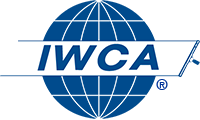November 30, 2015
By Tanya Weger, Madison Window Cleaning
Q. Which do you feel is more important?
#1 Training technicians on the proper technique to wash a window
#2 Training delivered by a competent person on how to do so safely.
Depending on who you ask and what their past experiences have been you’ll get varied answers. If you’ve been in business long enough there will have come a time where someone, perhaps even yourself, experienced some sort of work related accident or injury. If that happens I’m sure your focus will quickly turn to #2. You’ll also agree after going through that process that accidents are preventable. Proper training by the proper people is key along with routine monitoring and evaluation of the staff for compliance and corrective measures being taken when there is noncompliance.
Many of you embrace the importance of proper training utilizing the competent person standard as defined by OSHA. IWCA offers several methods of accomplishing this task. The IWCA Window Cleaner Safety Training Program is not just about one method of window cleaning or one piece of access equipment, it’s about giving you the knowledge and expertise to learn how to think safely and plan ahead for any type of window cleaning you may perform and it covers the most popular types of access equipment being used today. Your staff could attend a face to face seminar lead by our Safety Director and then continue their education to become a Certified Window Cleaner through the IWCA Certification program. Those options still remain and we are exploring additional options for assisting you to achieve training for your staff. Furthermore we will continue to work toward expanding our coverage of face to face training sessions as well as the frequency of training through developing a network of Certified Instructors.
As an employer you want to be operating in full compliance not only to ensure worker safety but to avoid all of the ramifications that accompany noncompliance.
These links may be helpful to you to further understand the duties of the employer.
https://www.osha.gov/dte/index.html
https://www.osha.gov/Publications/osha2254.pdf
https://www.osha.gov/SLTC/competentperson/index.html
The term “Competent Person” is used in many OSHA standards and documents. An OSHA “competent person” is defined as “one who is capable of identifying existing and predictable hazards in the surroundings or working conditions which are unsanitary, hazardous, or dangerous to employees, and who has authorization to take prompt corrective measures to eliminate them” [29 CFR 1926.32(f)]. By way of training and/or experience, a competent person is knowledgeable of applicable standards, is capable of identifying workplace hazards relating to the specific operation, and has the authority to correct them. Some standards add additional specific requirements which must be met by the competent person.
The training requirements as defined by 29 CFR 1926 can be very specific and some are broad. The following is an example of what is required under 1926.503 Fall Protection and a link to that section is below: https://www.osha.gov/pls/oshaweb/owadisp.show_document?p_table=standards&p_id=10759
1926.503 Training requirements
(a) Training Program.
(1) The employer shall provide a training program for each employee who might be exposed to fall hazards. The program shall enable each employee to recognize the hazards of falling and shall train each employee in the procedures to be followed in order to minimize these hazards.
(2) The employer shall assure that each employee has been trained, as necessary, by a competent person qualified in the following areas….
(b) Certification of training.
(1) The employer shall verify compliance with paragraph (a) of this section by preparing a written certification record. The written certification record shall contain the name or other identity of the employee trained, the date(s) of the training, and the signature of the person who conducted the training or the signature of the employer.
(c) Retraining. When the employer has reason to believe that any affected employee who has already been trained does not have the understanding and skill required by paragraph (a) of this section, the employer shall retrain each such employee.
Compliance and training go hand in hand when lives are at risk. Visit the IWCA Education page at https://www.iwca.org/?page=Education frequently to stay current on the various educational opportunities offered.


